Sometimes it helps to get a bit lost. In Estonia, that’s easily done. It’s more than twice the size of Wales, with a population (1.3 million) that would barely fill a few London boroughs, and almost two-thirds of the country is covered with forest. We got lost the very first time we stepped into the trees, and never found the thing we were looking for (the sea). But deep in the larch, we found Hansel-and-Gretel farmhouses, a frozen millpond, a colony of beavers, and a loo built over a stream. It felt as if we’d blundered into an earlier age.
Curious about this county’s great wild hinterlands, we’d come for a week in January. The national parks would be at their wintry best (a sparkling -8C), and we planned to tour two of them (Lahemaa and Soomaa), staying in artfully restored mansions.
There are wolves everywhere in this wild land (though they’re rarely seen), and the country is rich in mires and bogs. Even the locals get lost. I met a woman in Lahemaa whose little stroll had taken her 20 miles out of her way.
“Didn’t you worry about the bears?” I asked.
“No,” she smiled, “we know they’re out there but we never see them.”
Lucy, our 12-year-old, loved the notion of mythical creatures hiding in magical forests, and the language, which looks like vowel soup and, when spoken, sounds like the sea.

We adults were grateful for our driver/guide, Ivo Roosi, who would reappear every few days and whisk us off through another great, snowy landscape. Although doubtful about hiking, Ivo loved good food, technology, mischief and English. He took us to Mermer a gorgeous restaurant on the Baltic shore with one long table, where we ate a strangely exotic Mediterranean lunch. But he also liked old Soviet-era doughnut shops, where he could giggle at the decor.
From Tallinn airport, we’d headed east to the Lahemaa coast, which looked in places like the aftermath of some wild geological party, its clearings scattered with glacial erratics as big as cars. The storks (now winging their way to Africa) had left behind great shaggy nests, and everything was dusted in ice. In the Kõrvemaa forest to the south, we hired snowshoes and waddled off – penguin-like – across its glorious lacy-white swamp. The stillness was mesmerising. “No one came here for years,” said Ivo. “It’s where the Russian tank regiments used to train.”
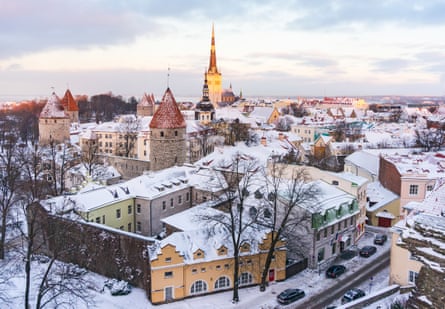
But in centuries gone by, everyone wanted a piece of these magnificent bogs. The Finns left their place names behind and the Vikings their loot (check out the great hoards of Arabic coins in Tallinn’s maritime museum). But it was German aristocrats who prevailed, arriving as crusaders in the Middle Ages. They stayed until 1918, embellishing the forest with their outlandish pastel-coloured palaces.
Many of these mansions have survived and are open to visitors. We came across Kolga, a Palladian wreck to the west of Lahemaa; Sagadi, now a hotel, with a fresh coat of pink paint; and Palmse, now a museum and guesthouse but looking much as it must have done the day the Prussians left. Easily the most sumptuous, however, is Vihula to the east, with its own vodka distillery and a collection of Soviet limousines. It also happened to be our hotel. After years as a collective farm, it now has a new life, with 73 stylish rooms, an eco-spa and a tempting menu that includes an elk tartare starter.
“So cool,” said Lucy. “So Scandi.”

After three days there, we headed for the west coast, stopping off in Tallinn. I love the foresty capital of this foresty country. About four-fifths of the city walls survive and, on the main square, you can still buy fox-tails and tins of bear meat. In the apothecary (established 1422), old prescriptions on display have earthworms and “scorched hedgehogs” as ingredients. Even better is the Great Guildhall museum, full of remarkable things that have tumbled from Estonia’s past: a Pompeiian lamp, Lenin’s spoon, and shrapnel from the bomb that killed Tsar Alexander II in 1881.
Our next forest was the boggy one. Each spring, Soomaa national park floods, submerging an area the equivalent of 120 Hyde Parks in more than four metres of water.
“We canoe everywhere,” said our guide, Aivar. “It’s the Estonian Amazon.” Few people live in the park, he said, “but they’re all amphibious, and make their own dugouts.”
Wildlife thrives in this watery world, especially beavers and cranes, and two packs of wolves.
Aivar took us on several hikes, across the now-frozen bog and introduced us to a wolf-scientist, but we never met his subjects. Mostly, we were on a network of boardwalks that zigzagged through the trees and out over the ice. It is a dreamy, haunting landscape, flanked by the misty Navesti river and setting for Aivar’s family farm. There used to be more houses, he said, but the Russians deported thousands of kulaks (prosperous peasants), “including my grandfather, sent to Siberia in 1941”.
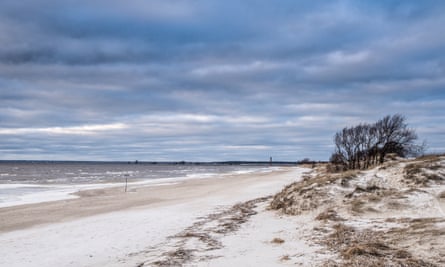
At times, the swamps were woody and dark, with no sound but the distant woodpecker’s tap. But, elsewhere, the mires opened out onto dazzling white plains of frozen cloudberry and sedge. Some bogs, such as Kuresoo, are so vast they have their own islands. They were inhabited until recently, people eking out secret, ancient lives. On one island, a band of guerrillas – or Forest Brothers – had held out against the Soviets until March 1953.
For those last few days, we stayed on the east coast, a short drive from Soomaa. Pärnu, known as Estonia’s summer capital, is a breezy place of spires and clapboard and brilliant colours. There’s a brand-new waterpark, a jazz bar called Bum-Bum, and an antique shop that sells Tsarist knick-knacks and funeral portraits. There’s also a long white beach, studded with lively cafes and backed by dunes. It seemed odd to find so much summer in the depths of winter.
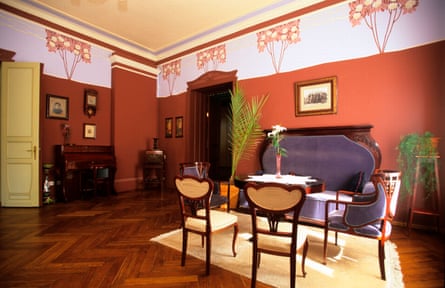
Of all Pärnu’s mansions, our hotel was the most exuberant. Built by a merchant on his daughter’s marriage, Villa Ammende is a work of love and unbridled art nouveau. So perfectly has it been restored, I half-expected that, at any moment, a party of Edwardian wedding guests would come swishing through the door. One night, we ate an exquisite dinner (local lamb, followed by lobster with Tahitian vanilla) three floors up in the villa’s tower, thinking of the merchants sitting here a century ago, watching their wealth sail in from the Baltic.
On our last day, we took a walk along the sands. The sea was mercury-calm, and Estonia’s wild hinterlands were behind us – in more senses than one. We’d got delightfully lost, but now we were found.
Way to go
The trip was provided by Baltic Holidays (0845 070 5711), whose seven-night Rural Estonia tour, including transfers, B&B accommodation, and guides but not flights, costs from £742pp. Ryanair flies from Stansted to Tallinn from £72 return.
- John Gimlette’s latest book is Elephant Complex: Travels in Sri Lanka (Riverrun, £10.99)
FIVE MORE EUROPEAN WILDERNESS ADVENTURES
Spot bison in Białowieża forest, Poland
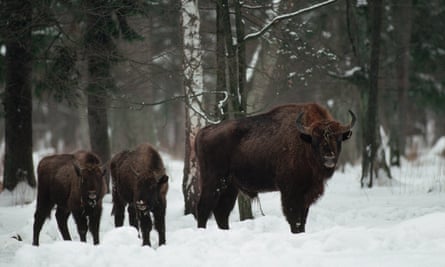
Białowieża, which straddles the Poland-Belarus border, is a natural wonder, one of the last sections of primeval forest in Europe that once cloaked the Great European Plain. Even now it’s an impressive place, a 7,000-year-old environment still roamed by wild bison. To see these animals in their natural habitat, try a three-day tour with Responsible Travel. This includes a safari led by a local guide, which also provides the opportunity to learn about the other birds, wildlife and plantlife to be found among the trees. When the outdoor part of the trip is over, refuel with traditional Polish grub served up at a wooden lodge.
From €690 for four days, excluding flights, responsibletravel.com
Explore the Fulufjället national park, Sweden

In the centre of Sweden, Fulufjället was only inaugurated as a national park in 2002. The 385 sq km region features dense forest, valleys and heathland, as well as the Njupeskär waterfall, which, at 93 metres, is the highest in Sweden. The park is suitable for all things outdoorsy, from hiking and fishing to skiing, and there are cottages and cabins to rent all year round, which can be booked through the Swedish national parks site.
Cottage/cabin from £10pp a night, sverigesnationalparker.se
Go hiking in the Balkan mountains, Bulgaria

This remains an incredibly affordable country for UK travellers (and one of the cheapest places to learn how to ski). The Central Balkan national park is a wild expanse in the heart of the country, encompassing the Balkan mountains, and is one of Europe’s largest protected areas. You can self-guide a hike along the many trails, staying in the huts listed on the official site , or book a tour. Sherpa Expeditions offers an eight-day walking adventure, which takes in caves and ancient monasteries.
From £480pp, sherpaexpeditions.com
From Porto to the Peneda-Gerês park, Portugal
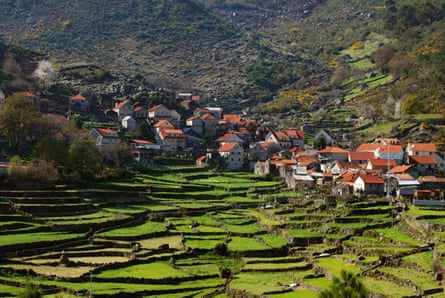
Just over an hour’s drive from Porto is this majestic national park, a vast region with mountains, rivers, forests and a rich rural heritage. Visitors can explore traditional villages, castles and drive down the old Roman road from Braga to Astorga. In Gerês, you can also soak in the 17th-century thermal baths. There are cabins and lodges in the park, as well as campsites in Campo do Gerês, Terras de Bouro and Cabril.
Dorm beds from £12 a night, hostelgeres.com
The lakes of Durmitor national park, Montenegro

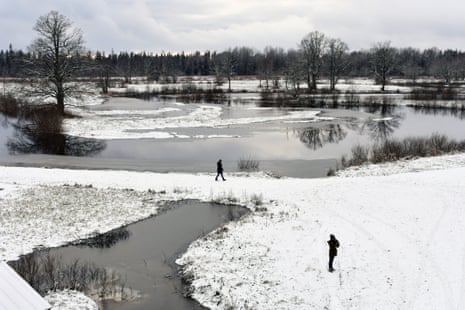
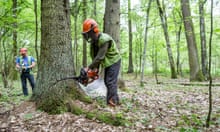


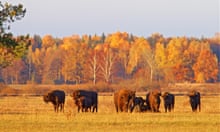



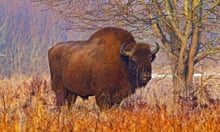

Comments (…)
Sign in or create your Guardian account to join the discussion